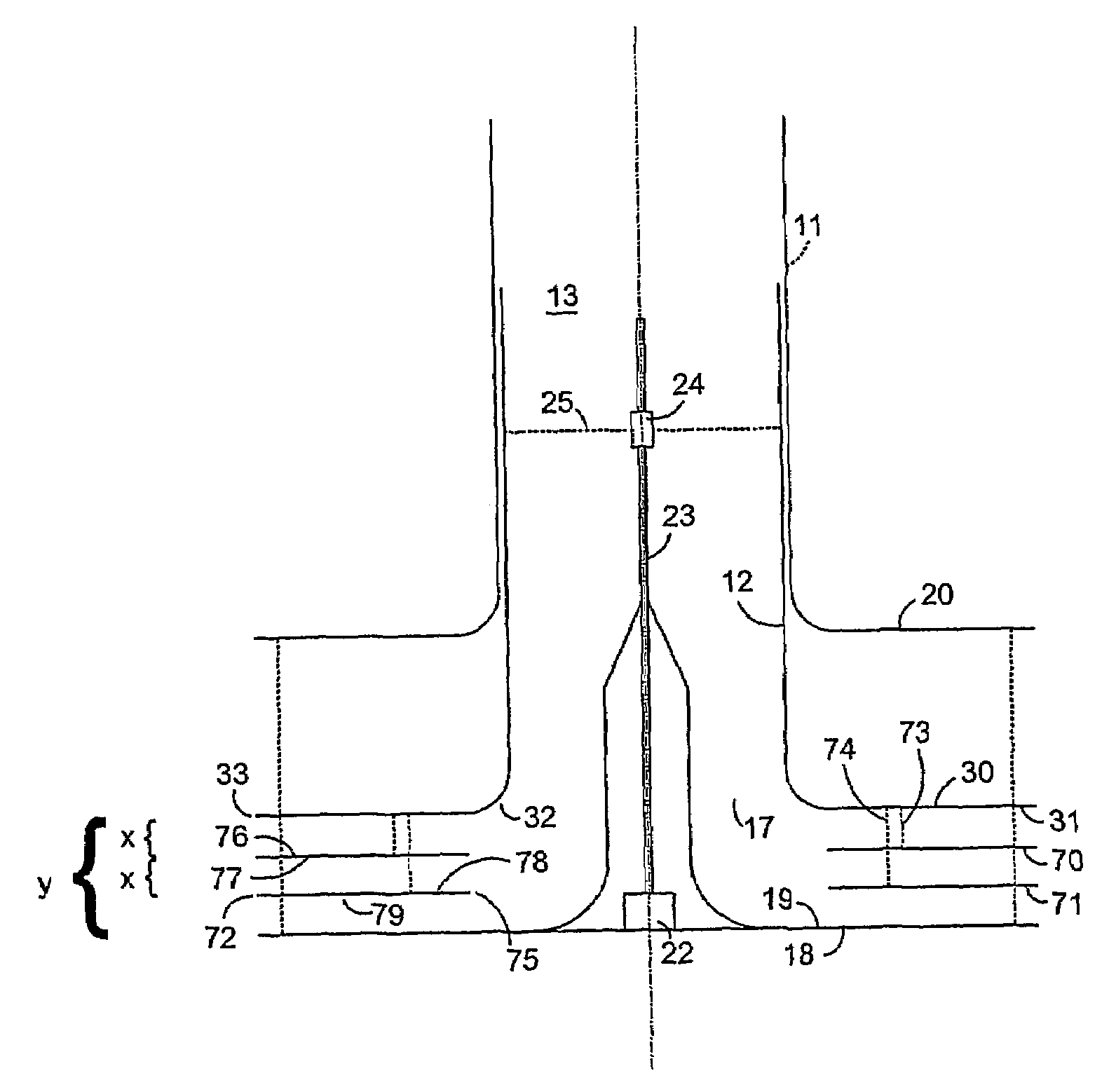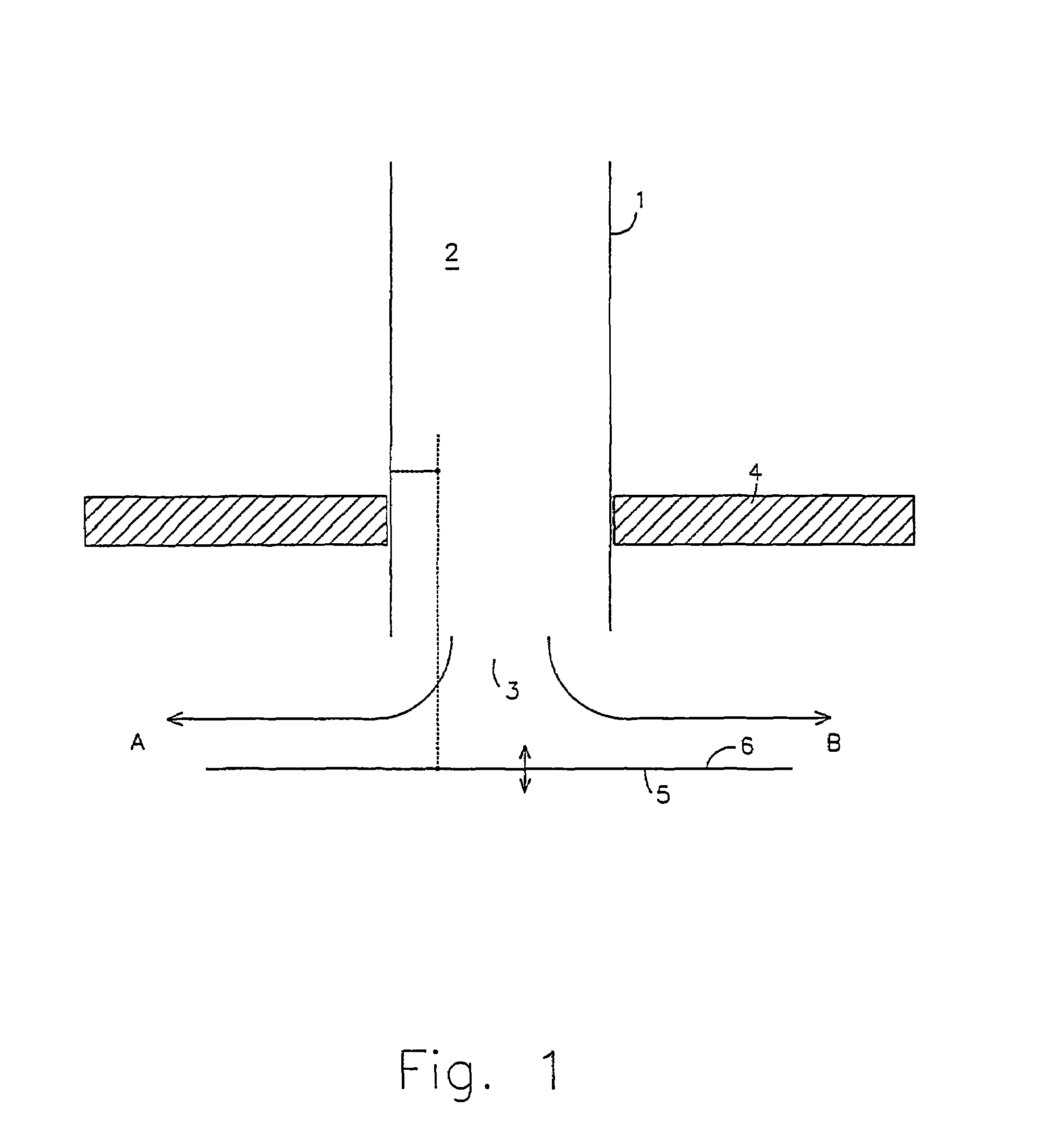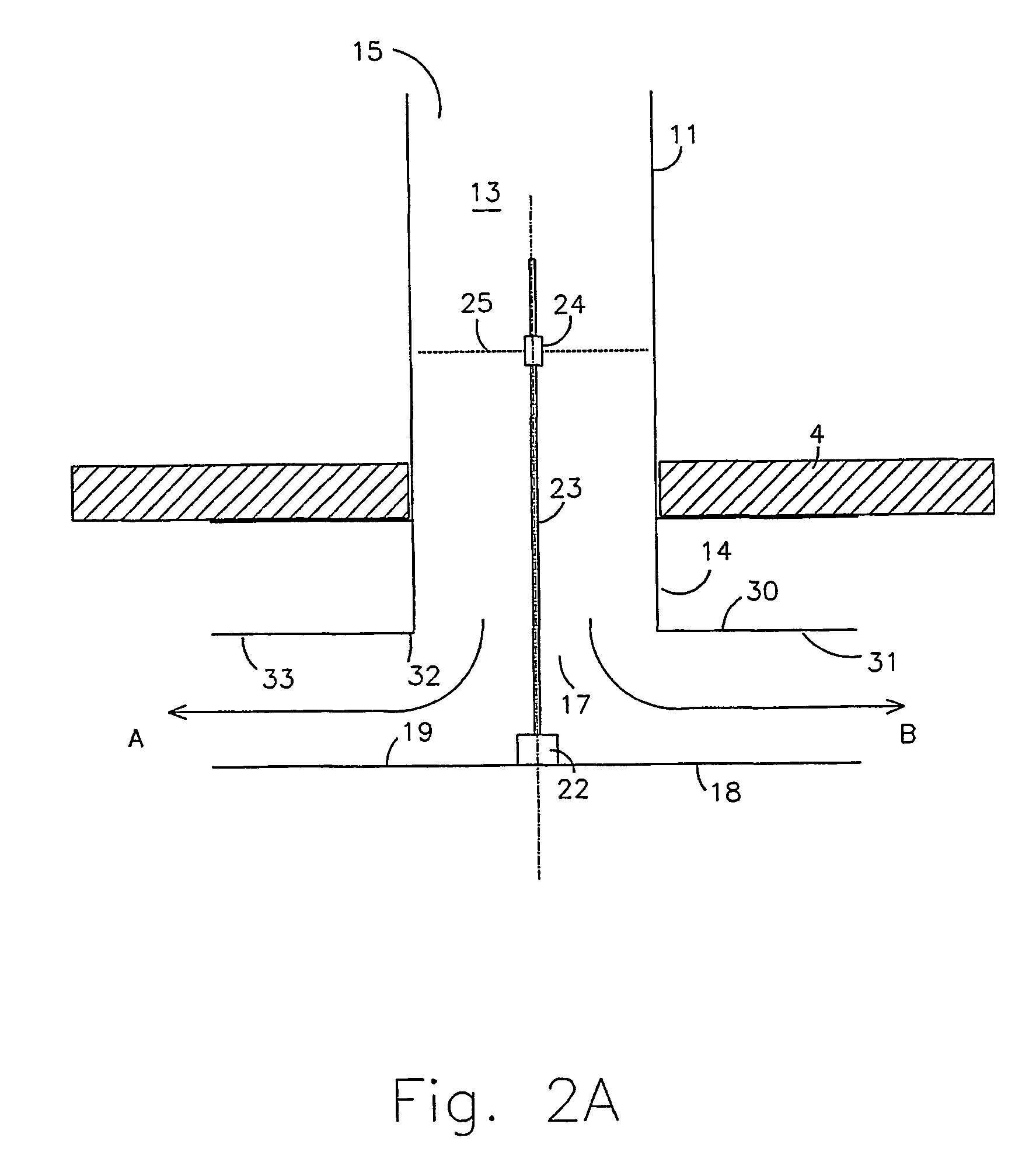Adjustable valve for variable flows and a method for reducing flow through a valve
a variable flow, valve technology, applied in the field of valves for variable flows, can solve the problems of unsatisfactory requirements, increased energy costs, and unnecessary energy consumption, and achieve the effect of quiet operation and small power consumption
- Summary
- Abstract
- Description
- Claims
- Application Information
AI Technical Summary
Benefits of technology
Problems solved by technology
Method used
Image
Examples
Embodiment Construction
[0037]The present invention relates to a valve for variable air flows which is capable of reducing the air-flow with minimum sound generation.
[0038]In FIG. 2A a valve according to the present invention is shown, comprising a tube 11 arranged e.g. at the ceiling 4 of a room, which tube 11 forms a conduit 13 for flow of air. The tube comprises a first stationary tube member 11, preferably firmly arranged towards said ceiling 4 at the first open end 14 of the tube member. The stationary tube member has an open output opening 17 at the first end 14. An open input opening 15 is arranged at the second end of the tube member 11, arranged for connection to a ventilation system (not shown) for supply of air. Hence, the valve is devised for flow of air from said input end 15, through the conduit 13, and out through said output opening 17. Furthermore, the valve comprises a flow reducing device 18 for regulation of the air flow out from the tube 11. Said flow reducing device 18 displays a surf...
PUM
 Login to View More
Login to View More Abstract
Description
Claims
Application Information
 Login to View More
Login to View More - R&D
- Intellectual Property
- Life Sciences
- Materials
- Tech Scout
- Unparalleled Data Quality
- Higher Quality Content
- 60% Fewer Hallucinations
Browse by: Latest US Patents, China's latest patents, Technical Efficacy Thesaurus, Application Domain, Technology Topic, Popular Technical Reports.
© 2025 PatSnap. All rights reserved.Legal|Privacy policy|Modern Slavery Act Transparency Statement|Sitemap|About US| Contact US: help@patsnap.com



